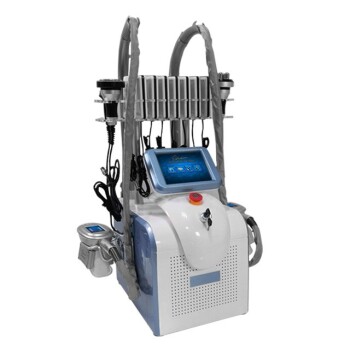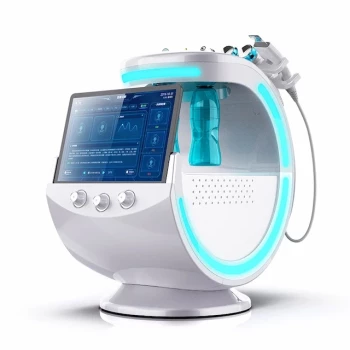While generally considered a low-risk procedure, fat freezing, or cryolipolysis, is not without potential side effects and complications. These range from common and temporary issues like redness, swelling, and numbness to rarer but more significant risks, including the potential for uneven results or a paradoxical increase in fat cells in the treated area. Understanding these risks is essential for making an informed decision.
Cryolipolysis is a targeted procedure for reducing small, stubborn pockets of fat in appropriate candidates. Its primary risks are not systemic health issues but rather aesthetic outcomes that may not meet expectations, and in rare cases, require further intervention to correct.

Understanding Common and Temporary Side Effects
For most people, the side effects of fat freezing are mild, localized to the treatment area, and resolve on their own within a few days to weeks. These are expected parts of the body's reaction to the procedure.
Sensations During and After Treatment
During the session, you can expect to feel sensations of pulling, tugging, and intense cold. This typically subsides into numbness as the area is cooled. Immediately after the applicator is removed, the area will be very cold, firm, and may appear red or white.
Post-Procedure Swelling and Bruising
Swelling, bruising, and redness are very common. This is your body's natural inflammatory response to the targeted cooling of fat cells and is a normal part of the healing process. These effects usually peak within the first few days and then gradually disappear.
Lingering Numbness or Tingling
A feeling of numbness or altered sensation in the treated area is also expected. This occurs because the cold temporarily affects local nerves. For most, full sensation returns within a few weeks, though in some cases it can take longer.
Evaluating Less Common but More Significant Risks
Beyond the immediate, temporary side effects, there are less common risks that carry more significant implications for your final aesthetic result.
Uneven or Asymmetrical Results
There is a risk that the fat reduction may be irregular, leaving the skin surface looking slightly uneven or asymmetrical. This can be due to applicator placement, your body's unique healing pattern, or pre-existing asymmetries. Multiple sessions are often needed to achieve a smooth and satisfactory result.
The Risk of Paradoxical Adipose Hyperplasia (PAH)
This is the most well-known serious complication, though it is rare. In PAH, the fat cells in the treated area react by growing larger and harder instead of being eliminated. The result is a firm, well-defined mass in the exact shape of the treatment applicator.
PAH is not a health risk, but it is a significant aesthetic problem. It does not go away on its own and typically requires surgical correction, such as liposuction, to remove.
Skin Damage or Discoloration
Though very rare with modern, FDA-cleared devices that have built-in safety sensors, there is a theoretical risk of frostbite or burns if the machine malfunctions or is used improperly. Changes in skin pigmentation can also occur, though this is uncommon.
Who Should Avoid Fat Freezing?
Cryolipolysis is not a one-size-fits-all solution. It is specifically contraindicated for certain individuals and conditions.
Individuals with Obesity
This procedure is designed for spot reduction of stubborn fat pockets, not for significant weight loss. It is not an effective or appropriate treatment for people classified as having obesity, as the results would be negligible and unsatisfactory.
People with Cold-Related Conditions
Individuals with conditions that are triggered or worsened by cold exposure should not undergo fat freezing. This includes cryoglobulinemia, cold urticaria, and paroxysmal cold hemoglobinuria, as the procedure could cause a serious systemic reaction.
Areas with Impaired Skin or Circulation
Treatment should not be performed on areas with compromised skin integrity, such as rashes, cuts, or infections. It should also be avoided over areas with hernias, varicose veins, or impaired circulation to prevent complications.
Making an Informed Decision
Choosing whether to proceed with fat freezing requires weighing the potential for modest fat reduction against the costs and potential risks.
- If your primary focus is safety: Choose a board-certified dermatologist or plastic surgeon's office with extensive experience using an FDA-cleared device.
- If your primary focus is dramatic results: Understand that cryolipolysis offers subtle to moderate improvement and is not a substitute for surgical procedures like liposuction.
- If your primary focus is avoiding downtime: Fat freezing is an excellent non-invasive option, but you must be prepared to accept the common and temporary side effects like swelling, bruising, and numbness.
A thorough consultation with a qualified provider is the most critical step to ensure fat freezing is a safe and effective choice for your body and goals.
Summary Table:
| Risk Level | Common Side Effects | Less Common Risks | Who Should Avoid |
|---|---|---|---|
| Common | Redness, swelling, bruising, numbness | - | Individuals with obesity |
| Less Common | - | Uneven results, skin discoloration | Cold-related conditions (cryoglobulinemia) |
| Rare | - | Paradoxical Adipose Hyperplasia (PAH) | Areas with impaired skin/circulation |
Achieve Safe and Effective Fat Reduction with BELIS
Considering fat freezing for your clinic or premium beauty salon? Understanding the risks is crucial for delivering optimal results to your clients.
BELIS specializes in professional medical aesthetic equipment designed with advanced safety features to minimize common side effects and prevent rare complications like PAH. Our FDA-cleared cryolipolysis devices feature intelligent temperature control and safety sensors to ensure precise, consistent treatments every time.
Why choose BELIS for your fat freezing needs?
- Enhanced Safety Protocols: Built-in safety mechanisms protect both practitioners and clients
- Superior Results: Advanced technology delivers more predictable, even fat reduction
- Professional Training: Comprehensive support and training for your staff
- Trusted by Experts: Preferred by dermatologists and plastic surgeons worldwide
Don't leave your clients' results to chance. Contact our specialists today to learn how BELIS medical aesthetic equipment can elevate your practice while ensuring the highest standards of safety and efficacy.
Schedule Your Consultation Now
Visual Guide

Related Products
- Fat Freezing Cryolipolysis Machine for Body Contouring
- Fat Freezing Cryolipolysis Machine for Body Contouring
- Cryolipolysis Fat Freezing Machine and Ultrasonic Cavitation Device
- Cryolipolysis Fat Freezing Machine with Cavitation and Laser Lipolysis
- Cryolipolysis Fat Freezing Machine Ultrasonic Cavitation Fat Reducing Device
People Also Ask
- How many fat freezing sessions do you need? Achieve Your Body Contouring Goals
- Do fat freezing machines work? A Realistic Guide to Body Contouring Results
- What are the negatives of fat freezing? Understanding the Risks and Side Effects
- How much weight can you lose with fat freezing? The Truth About Body Contouring vs. Weight Loss
- Do fat freezing machines really work? Achieve Non-Invasive Body Contouring



















